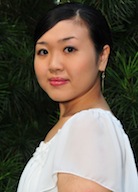In a recital entitled “Chromatic Journey,” pianist Yumi Suehiro presented a program that was challenging to both performer and listener. It featured Scriabin’s White Mass Sonata, Ligeti’s Autumn in Warsaw Etude, and the New York premiere of Football in Marja by American composer Alex Burtzos (b. 1985).
Opening with J. S. Bach’s Prelude and Fugue in B-flat minor from the Well-Tempered Clavier, Book Two, Ms. Suehiro showed straight away that she has her own ideas about the style and approach to this work. Perhaps her marimba experience helped shape these ideas, but whatever the case there was an overall percussive quality to her approach. Aaron Copland’s Passacaglia followed. Written in 1922 and dedicated to his teacher, Nadia Boulanger, this work was born of her insistence that her students “master traditional forms.” Featuring an eight-measure theme with eight variations, this work reflects Copland’s mastery of form, and it was given a well-conceived and taut performance, Ms. Suehiro built the intensity until it exploded in the last two variations. Football in Marja, written in 2011, is a musical portrait of Marja, a town in Afghanistan. The “football” is, of course, soccer, and is represented musically by hyper-energetic tritone motifs. The difficulties of everyday life are depicted with cluster chords. Ms. Suehiro championed this work with passionate commitment. With driving energy in the motoric sections, cascades of jagged clusters, and the final blast of sound, it was riveting from start to finish. Mr. Burtzos was in attendance and was obviously very pleased with Ms. Suehiro’s performance, as one would expect. The half ended with Improvisations on Hungarian Peasant Songs, Op. 20 by Béla Bartók, an eight-movement work characterized by thorny, angry motifs and driving rhythms throughout. While the seventh movement is dedicated to the memory of Debussy, there is nothing remotely Debussyian about any of this work. It has moments of lyricism, but it is not an easy piece for audiences to warm up to. Ms. Suehiro played these variations with an aggressiveness that at times bordered on the savage, but also brought out some of the more lyrical elements with sensitivity. It was an intriguing, if not fully satisfying, performance.
After a short intermission, Ms. Suehiro offered Alexander Scriabin’s Piano Sonata No. 7, Op. 64, the White Mass. Composed in 1911, this highly chromatic work walks the tightrope between tonality and atonality throughout. It was composed as an “exorcism” against the darkness of the Piano Sonata No. 6, Op. 62, which Scriabin believed to be fraught by demonic forces. He subtitled the work White Mass to signify the clearing of the darkness. Ms. Suehiro took the listener on a twelve-minute journey packed with moments of harrowing terror, beauty, and heaven storming. It was a journey I was glad to go on, in what was the highlight of the evening. Etude No. 6, Book 1 –Autumn in Warsaw from György Ligeti ended the recital. Ms. Suehiro remarked that she finds this work “funky and groovy” and a “weird and interesting piece.” It was the first time I had ever heard Ligeti referred to as funky and groovy and I admit it made me smile. In any case, this is one of Ligeti’s more accessible works, and Ms. Suehiro played it with polish. The audience rewarded Ms. Suehiro with a standing ovation. After all the thorns, it was time for a rose, which came in the form of Rachmaninoff’s Prelude in D major, Op. 23 No. 4, which Ms. Suehiro played as a encore with grace and sensitivity.
The evening left me with some reservations. First, the venue’s acoustics are not ideal. Even though the piano was on the half-stick, the volume was at times oppressively loud. Ms. Suehiro’s bold “all-in” approach would have been ideal for a larger venue, but not this one. I assume that Ms. Suehiro became oblivious to this issue in the heat of the moment; otherwise, I believe that she, being the intelligent and deeply committed musician that she is, would have made adjustments. Second, it might have been beneficial for Ms. Suehiro to offer some sonic relief; though the unifying theme was explicitly one of chromaticism, the “journey” would have benefited from more contrast. Third, although some would say this is nitpicking, the artist’s name was misspelled on the cover of the program, and there were factual errors in the program notes as well. Considering Ms. Suehiro’s careful attention to musical details, I was disappointed that these errors were not caught in the proofs.
Yumi Suehiro is an intense musician, one who invests every ounce of her energy, passion, and intellect into her performances. She should have a promising future.

